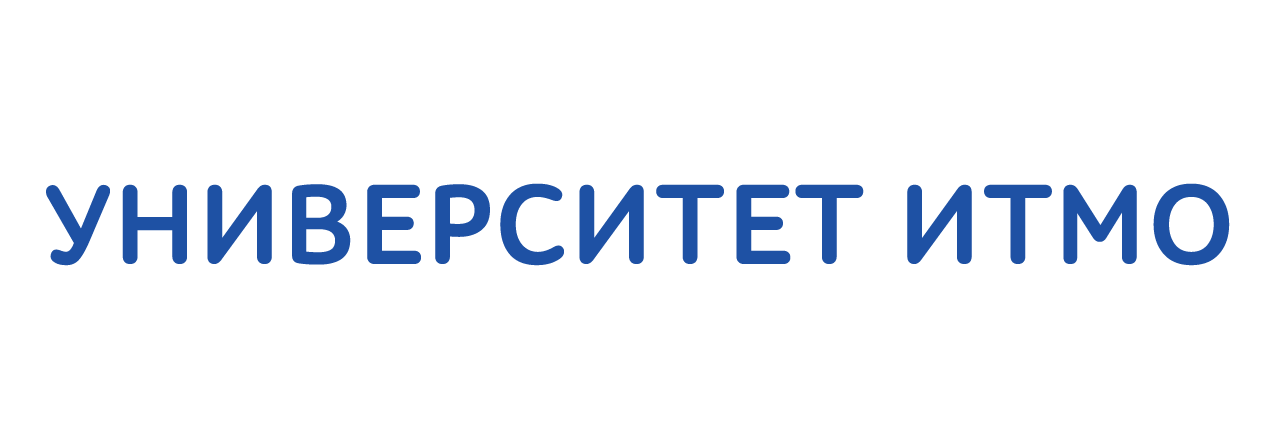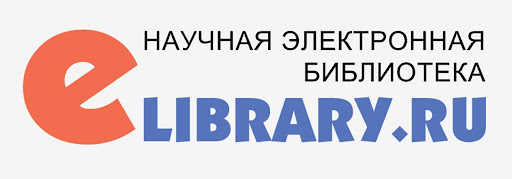Меню
Публикации
2025
2024
2023
2022
2021
2020
2019
2018
2017
2016
2015
2014
2013
2012
2011
2010
2009
2008
2007
2006
2005
2004
2003
2002
2001
Главный редактор

НИКИФОРОВ
Владимир Олегович
д.т.н., профессор
Партнеры
doi: 10.17586/2226-1494-2025-25-3-446-456
УДК 004.056.55
Анализ применимости существующих схем разделения секрета в условиях постквантовой эры
Читать статью полностью
Язык статьи - русский
Ссылка для цитирования:
Аннотация
Ссылка для цитирования:
Кустов Е.Ф., Беззатеев С.В. Анализ применимости существующих схем разделения секрета в условиях постквантовой эры // Научно-технический вестник информационных технологий, механики и оптики. 2025. Т. 25, № 3. С. 446–456. doi: 10.17586/2226-1494-2025-25-3-446-456
Аннотация
Рассмотрены современные подходы к разделению секрета, включая как классические, так и постквантовые криптографические схемы. Исследованы методы распределения секретной информации между несколькими участниками с использованием математических примитивов, таких как многочлены Лагранжа и Ньютона, китайская теорема об остатках, коды исправляющие ошибки, теория решеток, изогении эллиптических кривых, многомерные уравнения и хэш-функции. Приведен сравнительный анализ различных схем с точки зрения их устойчивости к квантовым атакам, эффективности и соответствия критериям Шамира. Особое внимание уделено оценке устойчивости схем к атакам с использованием квантовых компьютеров, что особенно актуально в условиях развития квантовых технологий. Рассмотрены преимущества и недостатки каждой из схем, включая их вычислительную сложность, гибкость и возможность адаптации к различным условиям. Показано, что классические схемы, такие как схемы Шамира и Ньютона, остаются эффективными и простыми в реализации, но уязвимы к квантовым атакам. В то же время постквантовые схемы, основанные на теории решеток, демонстрируют высокий уровень безопасности, но требуют более сложных вычислений.
Ключевые слова: постквантовая криптография, схема распределение секрета, пороговая схема, криптография с открытым ключом, теория решеток, эллиптические кривые, многомерные уравнения, коды исправляющее ошибки, хэш-функции
Благодарности. Работа выполнена в рамках государственного задания (проект № FSER-2025-0003).
Список литературы
Благодарности. Работа выполнена в рамках государственного задания (проект № FSER-2025-0003).
Список литературы
- Blakley G.R. Safeguarding cryptographic keys // Proc. of the International Workshop on Managing Requirements Knowledge (MARK). 1979. P. 313–313. https://doi.org/10.1109/mark.1979.8817296
- Shamir A. How to share a secret // Communications of the ACM. 1979. V. 22. N 11. P. 612–613. https://doi.org/10.1145/359168.35917
- Ильин В.А., Позняк Э.Г. Основы математического анализа. М.: Физматлит, 2005. 646 с.
- Barker E., Barker W., Burr W., Polk W., Smid M. NIST special publication 800-57 // NIST Special publication. 2007. V. 800. N 57. P. 1–142.
- Desmedt Y., Frankel Y. Threshold cryptosystems // Lecture Notes in Computer Science. 1990. V. 435. P. 307–315. https://doi.org/10.1007/0-387-34805-0_28
- Gennaro R., Jarecki S., Krawczyk H., Rabin T. Secure distributed key generation for discrete-log based cryptosystems // Lecture Notes in Computer Science. 1999. V. 1592. P. 295–310. https://doi.org/10.1007/3-540-48910-X_21
- Menezes A.J. Handbook of Applied Cryptography. Taylor & Francis, 1997. 810 p.
- Feldman P. A practical scheme for non-interactive verifiable secret sharing // Proc. of the 28th Annual Symposium on Foundations of Computer Science (sfcs 1987). 1987. P. 427–438. https://doi.org/10.1109/SFCS.1987.4
- McEliece R.J., Sarwate D.V. On sharing secrets and Reed-Solomon codes // Communications of the ACM. 1981. V. 24. N 9. P. 583–584. https://doi.org/10.1145/358746.358762
- Massey J.L. Minimal codewords and secret sharing // Proc. of the 6th joint Swedish-Russian international workshop on information theory. 1993. P. 276–279.
- Martínez-Peñas U. Communication efficient and strongly secure secret sharing schemes based on algebraic geometry codes // IEEE Transactions on Information Theory. 2018. V. 64. N 6. P. 4191–4206. https://doi.org/10.1109/tit.2018.2823326
- Sole P., Çalkavur S., Bonnecaze A., Dela Cruz R. Code Based Secret Sharing Schemes: Applied Combinatorial Coding Theory. World Scientific Pub Co Inc., 2022. 212 p.
- Kurihara J., Uyematsu T., Matsumoto R. Secret sharing schemes based on linear codes can be precisely characterized by the relative generalized Hamming weight // IEICE Transactions on Fundamentals of Electronics, Communications and Computer Sciences. 2012. V. E95.A. N 11. P. 2067–2075. https://doi.org/10.1587/transfun.e95.a.2067
- Massey J.L. Some applications of coding theory in cryptography // Codes and Ciphers: Cryptography and Coding IV. 1995. P. 33–47.
- Steinfeld R., Wang H., Pieprzyk J. Lattice-based threshold-changeability for standard Shamir secret-sharing schemes // Lecture Notes in Computer Science. 2004. V. 3329. P. 170–186. https://doi.org/10.1007/978-3-540-30539-2_13
- Ajtai M. Generating hard instances of lattice problems (extended abstract) // Proc. of the 28th Annual ACM Symposium on Theory of Computing (STOC '96). 1996. P. 99–108. https://doi.org/10.1145/237814.237838
- Regev O. On lattices, learning with errors, random linear codes, and cryptography // Journal of the ACM (JACM). 2009. V. 56. N 6. P. 1–40. https://doi.org/10.1145/1568318.1568324
- Bansarkhani R.E., Meziani M. An efficient lattice-based secret sharing construction // Lecture Notes in Computer Science. 2012. V. 7322. P. 160–168. https://doi.org/10.1007/978-3-642-30955-7_14
- Khorasgani H.A. Asaad S., Eghlidos T., Aref M. A lattice-based threshold secret sharing scheme // Proc. of the 11th International ISC Conference on Information Security and Cryptology. 2014. P. 173–179. https://doi.org/10.1109/ISCISC.2014.6994043
- Ajtai M., Dwork C. A public-key cryptosystem with worst-case/average-case equivalence // Proc. of the 29th Annual ACM Symposium on Theory of Computing (STOC '97). 1997. P. 284–293. https://doi.org/10.1145/258533.258604
- Lyubashevsky V., Micciancio D. Generalized compact knapsacks are collision resistant // Lecture Notes in Computer Science. 2006. V. 4052. P. 144–155. https://doi.org/10.1007/11787006_13
- Peikert C., Rosen A. Efficient collision-resistant hashing from worst-case assumptions on cyclic lattices // Lecture Notes in Computer Science. 2006. V. 3876. P. 145–166. https://doi.org/10.1007/11681878_8
- Georgescu A. A LWE-based secret sharing scheme // IJCA Special Issue on Network Security and Cryptography, NSC. 2011. V. 3. P. 27–29.
- Dehkordi M.H., Farahi S.T., Mashhadi S. LWE‐based verifiable essential secret image sharing scheme ((t, s, k, n) (t,s,k,n)‐VESIS) // IET Image Processing. 2024. V. 18. N 4. P. 1053–1072. https://doi.org/10.1049/ipr2.13006
- Golub G.H., Van Loan C.F. Matrix Computations. JHU press, 2013. 784 p.
- Shor P.W. Algorithms for quantum computation: discrete logarithms and factoring // Proc. of the 35th Annual Symposium on Foundations of Computer Science. 1994. P. 124–134. https://doi.org/10.1109/SFCS.1994.365700
- Smith B. Pre-and post-quantum Diffie–Hellman from groups, actions, and isogenies // Lecture Notes in Computer Science. 2018. V. 11321. P. 3–40. https://doi.org/10.1007/978-3-030-05153-2_1
- Couveignes J.M. Hard homogeneous spaces: Preprint // HAL science ouverte. 2006. hal-04538731
- Rostovtsev A., Stolbunov A. Public-key cryptosystem based on isogenies // IACR Cryptology ePrint Archive. 2006.
- Teske E. An elliptic curve trapdoor system // Journal of Cryptology. 2006. V. 19. P. 115–133. https://doi.org/10.1007/s00145-004-0328-3
- Charles D.X., Lauter K.E., Goren E.Z. Cryptographic hash functions from expander graphs // Journal of Cryptology. 2009. V. 22. N 1. P. 93–113. https://doi.org/10.1007/s00145-007-9002-x
- Jao D., De Feo L. Towards quantum-resistant cryptosystems from supersingular elliptic curve isogenies // Lecture Notes in Computer Science. 2011. V. 7071. P. 19–34. https://doi.org/10.1007/978-3-642-25405-5_2
- Castryck W., Lange T., Martindale C., Panny L., Renes J. CSIDH: an efficient post-quantum commutative group action // Lecture Notes in Computer Science. 2018. V. 11274. P. 395–427. https://doi.org/10.1007/978-3-030-03332-3_15
- Beullens W., Kleinjung T., Vercauteren F. CSI-FiSh: efficient isogeny based signatures through class group computations // Lecture Notes in Computer Science. 2019. V. 11921. P. 227–247. https://doi.org/10.1007/978-3-030-34578-5_9
- Stolbunov A. Constructing public-key cryptographic schemes based on class group action on a set of isogenous elliptic curves // Advances in Mathematics of Communications. 2010. V. 4. N 2. P. 215–235. https://doi.org/10.3934/amc.2010.4.215
- De Feo L., Meyer M. Threshold schemes from isogeny assumptions // Lecture Notes in Computer Science. 2020. V. 12111. P. 187–212. https://doi.org/10.1007/978-3-030-45388-6_7
- Cozzo D., Smart N.P. Sashimi: cutting up CSI-FiSh secret keys to produce an actively secure distributed signing protocol // Lecture Notes in Computer Science. 2020. V. 12100. P. 169–186. https://doi.org/10.1007/978-3-030-44223-1_10
- Sotáková J. Elliptic curves, isogenies, and endomorphism rings: Preprint. 2020.
- Kim T. Security analysis of group action inverse problem with auxiliary inputs with application to CSIDH Parameters // Lecture Notes in Computer Science. 2020. V. 11975. P. 165–174. https://doi.org/10.1007/978-3-030-40921-0_10
- Meyer M. Practical isogeny-based cryptography: dissertation. Universität Würzburg, 2021. 167 p.
- Rogaway P., Shrimpton T. Cryptographic hash-function basics: Definitions, implications, and separations for preimage resistance, second-preimage resistance, and collision resistance // Lecture Notes in Computer Science. 2004. V. 3017. P. 371–388. https://doi.org/10.1007/978-3-540-25937-4_24
- Zheng Y., Hardjono T., Seberry J. Reusing shares in secret sharing schemes // The Computer Journal. 1994. V. 37. N 3. P. 199–205. https://doi.org/10.1093/comjnl/37.3.199
- Liaojun P., Huixian L., Yumin W. An efficient and secure multi-secret sharing scheme with general access structures // Wuhan University Journal of Natural Sciences. 2006. V. 11. N 6. P. 1649–1652. https://doi.org/10.1007/BF02831842
- Lin H.Y., Yeh Y.S. Dynamic multi-secret sharing scheme // International Journal of Contemporary Mathematical Sciences. 2008. V. 3. N 1. P. 37–42.
- Das A., Adhikari A. An efficient multi-use multi-secret sharing scheme based on hash function // Applied Mathematics Letters. 2010. V. 23. N 9. P. 993–996. https://doi.org/10.1016/j.aml.2010.04.024
- Chum C.S., Zhang X. Hash function‐based secret sharing scheme designs // Security and Communication Networks. 2013. V. 6. N 5. P. 584–592. https://doi.org/10.1002/sec.576
- Bertoni G., Daemen J., Peeters M., Van Assche G. Keccak // Lecture Notes in Computer Science. 2013. V. 7881. P. 313–314. https://doi.org/10.1007/978-3-642-38348-9_19
- Putra R.A., Effendie A.R., Aisah S.N., Christy J.R., Marpaung E.C.F., Syarkowi M.Z.H., Devi P.K. Analyzing the relationship between capital and risk in Indonesian life insurance companies using the 2SLS and GMM methods // Jurnal Riset dan Aplikasi Matematika. 2024. V. 8. N 2. P. 142–157.
- Karnin E., Greene J., Hellman M. On secret sharing systems // IEEE Transactions on Information Theory. 1983. V. 29. N 1. P. 35–41. https://doi.org/10.1109/TIT.1983.1056621
- Ning Y., Miao F., Huang W., Meng K., Xiong Y., Wang X. Constructing ideal secret sharing schemes based on Chinese remainder theorem // Lecture Notes in Computer Science. 2018. V. 11274. P. 310–331. https://doi.org/10.1007/978-3-030-03332-3_12
- Asmuth C., Bloom J. A modular approach to key safeguarding // IEEE Transactions on Information Theory. 1983. V. 29. N 2. P. 208–210. https://doi.org/10.1109/tit.1983.1056651
- Galibus T., Matveev G. Finite fields, Gröbner bases and modular secret sharing // Journal of Discrete Mathematical Sciences and Cryptography. 2012. V. 15. N 6. P. 339–348. https://doi.org/10.1080/09720529.2012.10698386
















